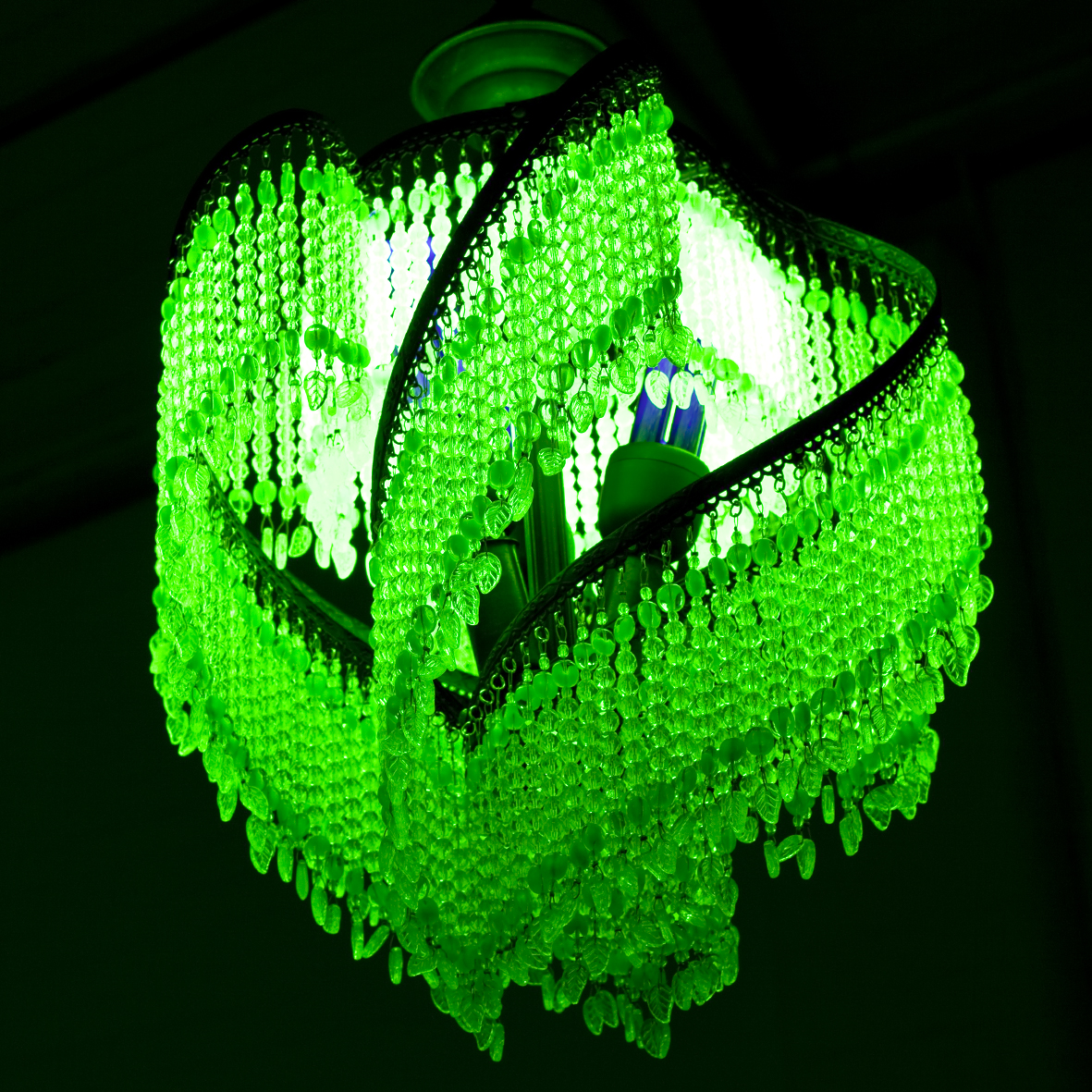Audio descriptions: Artworks in the exhibition Ken + Julia Yonetani: To Be Human

Ken + Julia YONETANI, Crystal Palace: The Great Exhibition of the Works of Industry of all Nuclear Nations (Pakistan) 2013, uranium glass, antique chandelier frames and electrical components, UV lights. The Gene & Brian Sherman Collection, Sydney. ©︎ Ken + Julia Yonetani. Courtesy of Mizuma Art Gallery.
Crystal Palace: The Great Exhibition of the Works of Industry of all Nuclear Nations (Pakistan) by Ken and Julia Yonetani, 2013.
This artwork is a chandelier or decorative glass light fitting suspended from the ceiling, measuring 37 centimetres in diameter and 47 centimetres from top to bottom. It hangs in a darkened room with four other chandeliers, which differ in appearance and size, and are hung at different heights.
This chandelier has six metal arms that extend from a central circular ring, and spiral downwards. On the circular ring, and on each arm, there are about 40 strands of brilliant green uranium glass beads. The beads cascade down like a curtain. On each strand, there are about 10 beads, some circular and flat, some spherical, ranging from about 2 millimetres to 5 millimetres in diameter. At the bottom of each strand is a leaf-shaped bead.
The metal chandelier frame is antique, and the uranium glass beads have been retrofitted by the artists. Three UV blacklight bulbs are fitted in the chandelier, giving the beads a haunting, electric green glow, due to their uranium content. If the UV lights were turned off and the chandelier were shown in natural light, the beads would appear a pale green colour.
Conceived in response to the Fukushima Daiichi nuclear disaster in Japan in 2011, this body of work comprises 32 chandeliers – five of which are on display in this exhibition, these being Switzerland, Pakistan, Japan, Germany and Bulgaria. The number of chandeliers signals the number of nations in the world that use nuclear power for electricity generation, and the size of each chandelier corresponds to the number of operating nuclear plants in that nation. This particular chandelier, Pakistan, is one of the smaller chandeliers in the series.
The full title of the work, Crystal Palace: The Great Exhibition of the Works of Industry of all Nuclear Nations (Pakistan), references the grandiose building designed for the Great Exhibition of 1851 in London, hinting at the tension between human ambition, technological development, and its costs and consequences.

